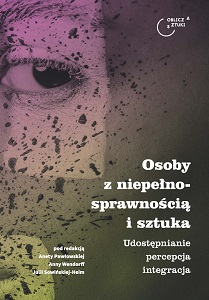Pomiędzy „aisthesis” a estetyką, czyli czego od niewidomych może się dowiedzieć estetyk
Between ‘aisthesis’ and aesthetics, or what an esthetician can learn from the blind
Author(s): Agnieszka Gralińska-Toborek
Subject(s): Visual Arts, Ethics / Practical Philosophy, Sociology of Art
Published by: Wydawnictwo Uniwersytetu Łódzkiego
Keywords: blind; aesthetics; aesthesis; touch; hearing; smell
Summary/Abstract: Aesthetics, the field of philosophy, is understood as the science of aisthesis – the sensual cognition, but also as a reflection on beauty, art, experiences and criticism. In both cases, the esthetician can learn a lot from blind people, because their use of senses other than eyesight is peculiarly precise and even amazing for sighted people. The senses of hearing, smell and especially touch play a cognitive role, which is often forgotten today, particularly in times when they are separated from their sources or even prepared in an artificial way. Reflection on the perception of the world by blind people may lead to the conclusion that it is much more concrete and “more powerful” than the seeming world of sighted people as Johann Gottfried Herder noted in the eighteenth century. This causes problems for people who try to translate reality perceived mainly with the help of sight to the language of other senses. Understanding and feeling these kinds of cognition requires the efforts and, above all, it takes time.
Book: Osoby z niepełnosprawnością i sztuka. Udostępnianie – percepcja – integracja
- Page Range: 25-35
- Page Count: 11
- Publication Year: 2019
- Language: Polish
- Content File-PDF

